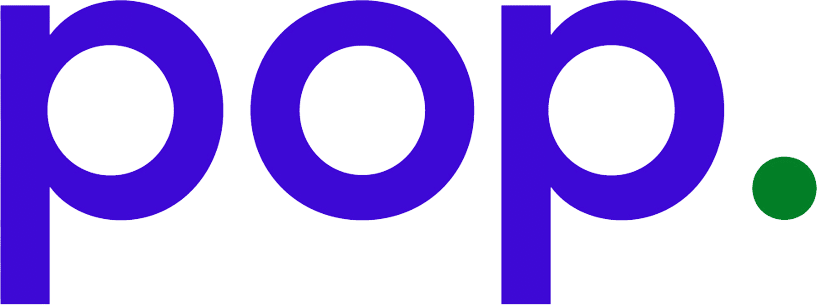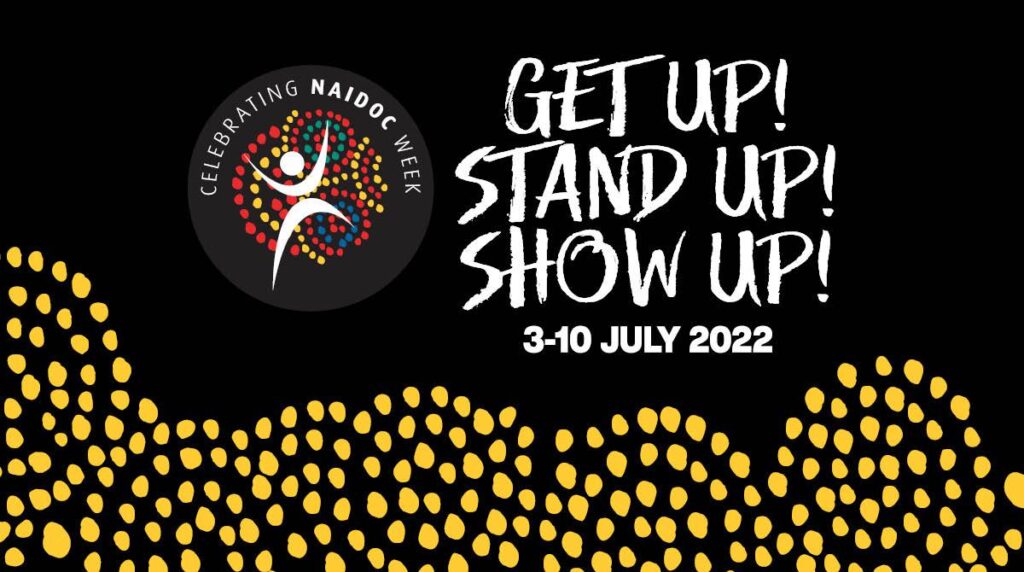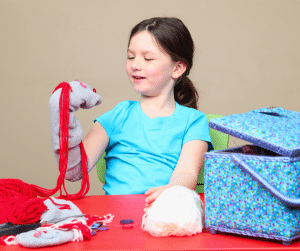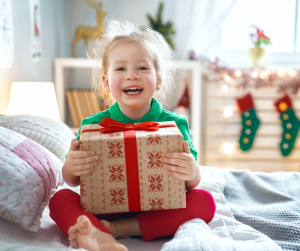One of the simplest ways we can dp this is by offering and using culturally appropriate speech therapy resources.
This can be in the form of books, toys, worksheets, decor within the workplace, or even sharing relevant social media posts.
However, it’s not as simple as Googling ‘Indigenous speech pathology resources’ and printing off the first colouring page that pops up! The resources we provide and promote in our practise as Speechies need to be genuine.
So, where can we find these resources? And what’s the best way to utilise them during speech therapy sessions?
To celebrate NAIDOC Week 2022, our Spot Speechie Emilie (a proud Wiradjuri woman) has created a guide on where to find genuine Indigenous resources for Speech Therapists, as well as some great Instagram pages to follow to learn more!
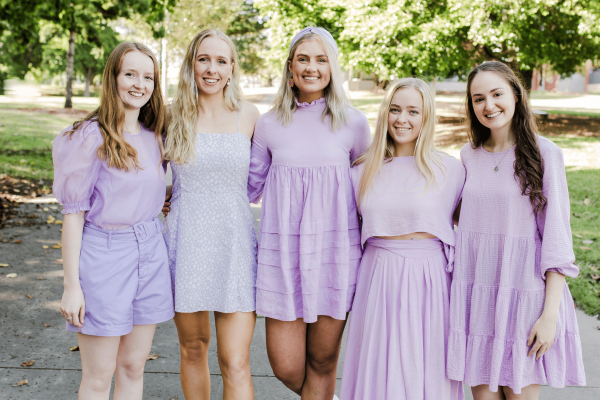
Why Does It Matter Whether My Resources Were Created By A First Nations Artist?
Before we dive into where to find genuine Indigenous resources, let’s discover why it’s important that these speech therapy tools are created by First Nations artists.While all art demonstrates a form of communication, Indigenous artwork conveys storytelling about culture, history, spirituality, and traditions which are passed down from generation to generation.
Australian Aboriginal culture is known to be the oldest living culture, with artwork dating back 40,000 years.
Some First Nations artists have continued a ‘traditional’ style, with other artists taking on a more contemporary approach.
Aboriginal and Torres Strait Islander art has become more and more popular in recent years, resulting in unethical trade, misrepresentation, and appropriation practices to the benefit of non-Indigenous people.
Sadly, most consumers don’t often realise that what they’re purchasing is unethically sourced. However, this still leaves Indigenous communities without fair pay and deeply insulted by misrepresentations of traditions, culture, and spirituality.
Buying ethically and authentically allows First Nations creators to be fairly paid whilst also respecting, promoting and fostering Australia’s First Nations art industry.
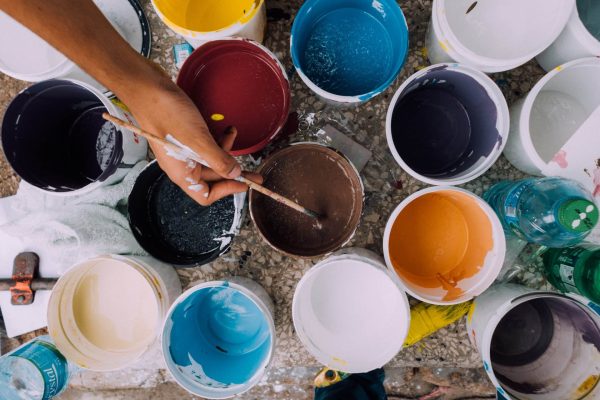
How Can I Tell Which Resources Have Been Made By Indigenous Artists?
It can be difficult to determine whether the Indigenous Speech Pathology resources you’re purchasing are genuine, or if the community that produced the artwork is being fairly compensated.However, there are some clues you can look for when searching for resources!
These include:
- If the company you’re purchasing from is not Indigenous-owned, yet claims to sell Indigenous-owned products, check to see if they are transparent about who made the item, and how much of the profit is given back to the Indigenous community.
- Check to see if the resource includes information about the name of the creator, their community, and even a photo of the artist. If the seller is ethical, they will be able to provide these details.
- Look for Indigenous-owned businesses. This is usually stated on the business’ website, like on their Home page or ‘About’ section.
Remember that all Indigenous resources are forms of Indigenous art and the purchase, promotion, or reproduction of non-genuine resources is harmful to First Nations people.
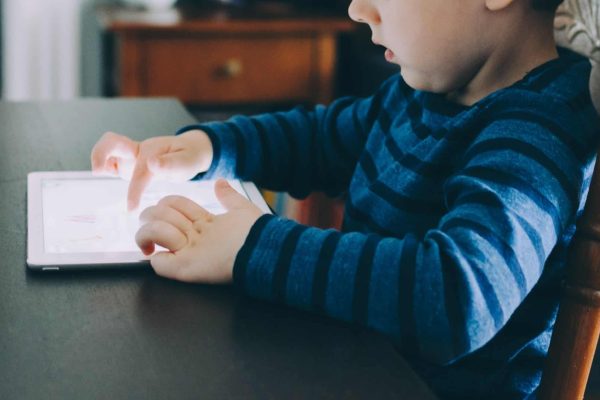
10 Of Our Favourite Indigenous-Made Resources For Speech Therapists
While there are countless incredible Indigenous artists with works available for purchase online, we’ve selected our top 10 to share with you today.
Books
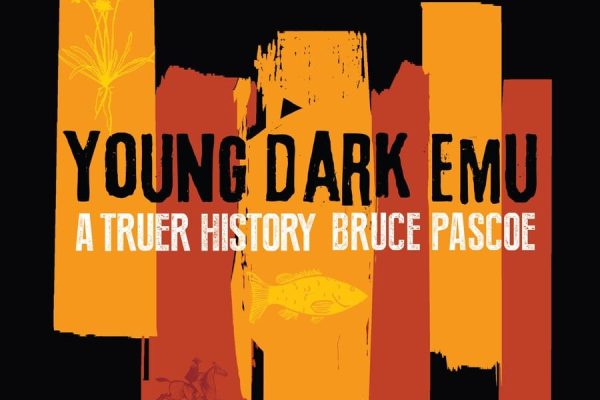
Young Dark Emu by Bruce Pascoe
Blurb: “Using the accounts of early European explorers, colonists and farmers, Bruce Pascoe compellingly argues for a reconsideration of the hunter-gatherer label for pre-colonial Aboriginal Australians.
He allows the reader to see Australia as it was before Europeans arrived — a land of cultivated farming areas, productive fisheries, permanent homes, and an understanding of the environment and its natural resources that supported thriving villages across the continent.
Young Dark Emu — A Truer History asks young readers to consider a different version of Australia’s history pre-European colonisation”.
Where to buy a copy:
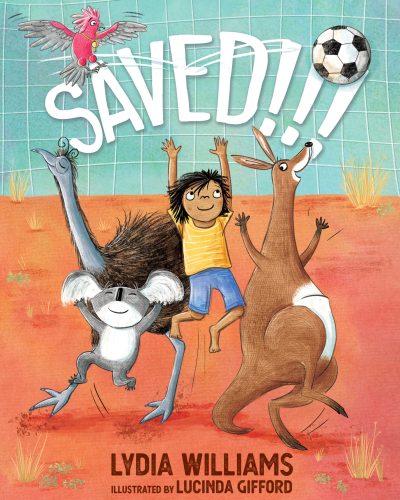
Saved by Lydia Williams
Blurb: “Little Lydia learns to be the best that she can be as she competes in a variety of sports against very unusual competitors.
An inspiring celebration of self-belief, the joy to be had in sport, and the importance of persistence. Little Lydia loves sport. She lives in the outback and is friends with all the animals.
When she asks Emu, Kangaroo and Koala to play sport with her, she soon discovers that each of them has a special talent. But does Lydia have a gift for sport too? And if she does, how will she discover it?”.
Where to buy a copy:
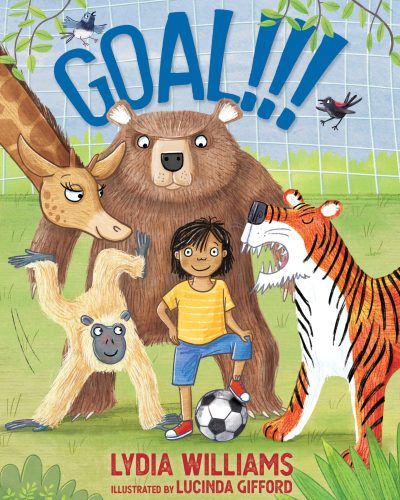
Goal by Lydia Williams
Blurb: “Little Lydia moves from the desert to the big city. Leaving her animal friends behind is hard – but before long she’s meeting new ones at the zoo.
At first she can’t keep up with Tiger, Bear and Gibbon – their skills are amazing. But soon Lydia discovers that learning from others is the best way to improve AND have fun.
A joyous and triumphant picture book about friendship, sport, and teamwork by Lydia Williams, goalkeeper for the Australian Matildas and for Arsenal in the UK”.
Where to buy a copy:
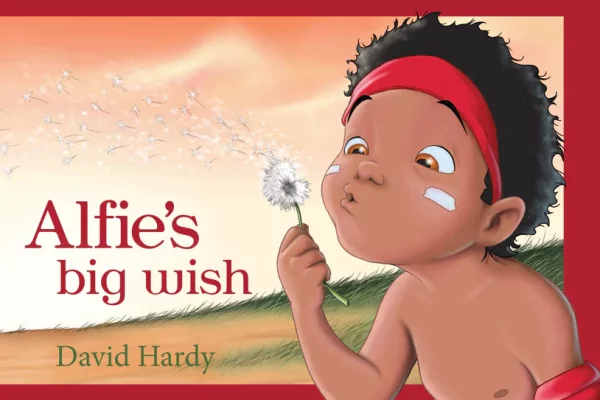
Alfie’s Big Wish by David Hardy
Blurb: “In David Hardy’s beautifully illustrated new picture book we join a young boy, Alfie, on a quest for companionship.
When at first his friends leave with their parents, he searches high and low for somebody new to play with.
Sad and lonely at the end of the day, Alfie makes a big wish. When he wakes up, he finds out that sometimes wishes really do come true!”.
Where to buy a copy:
Toys & Games
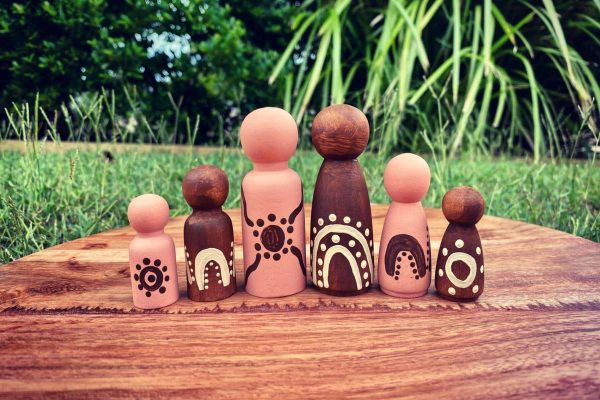
Aboriginal Symbols Peg Doll Family (multiple varieties!)
Price: $55
Where to buy:
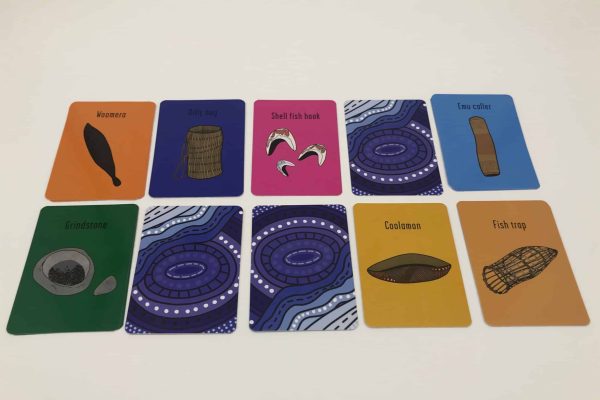
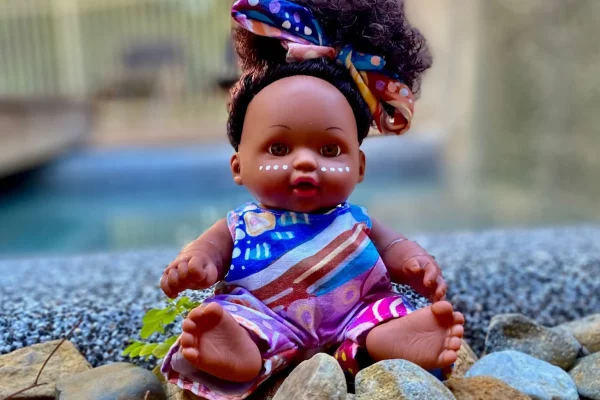
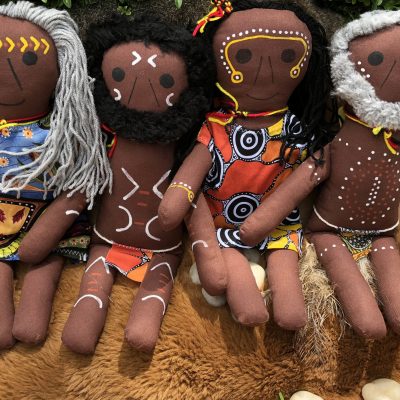
Set of dolls (be sure to check out Koori Curriculum’s puppets, too!)
Price: $220 for a set of 4
Where to buy:
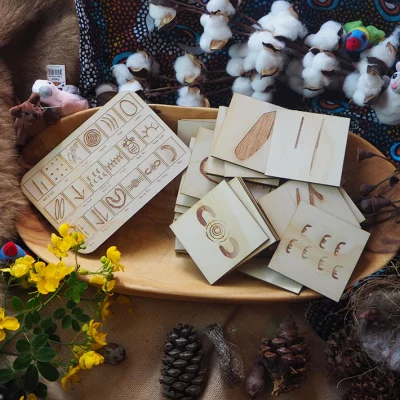
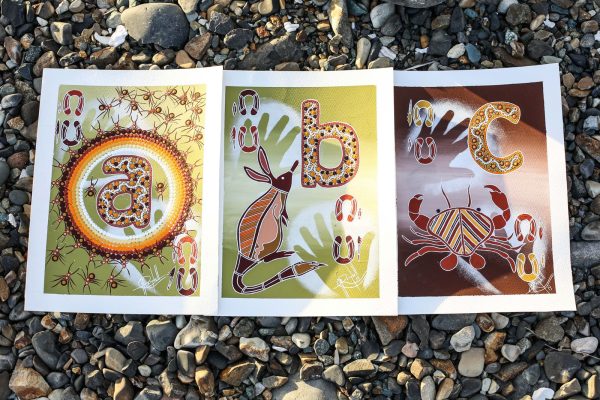
Rewards
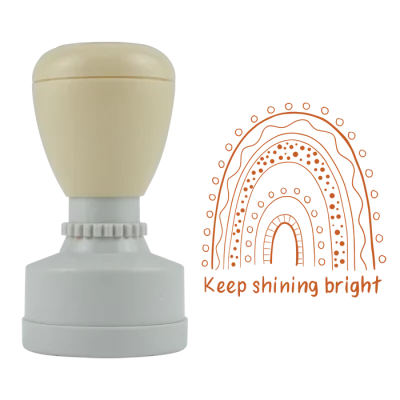
Assorted Stamps
Note: this resource is sold through a non-Indigenous owned business through a collaboration with Indigenous artist, Holly Sanders.
Price: $17.95 per stamp
Where to buy:
Bonus: AAC Resources
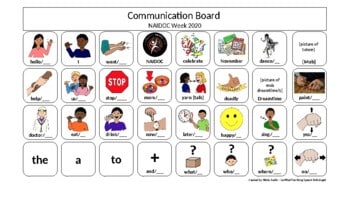
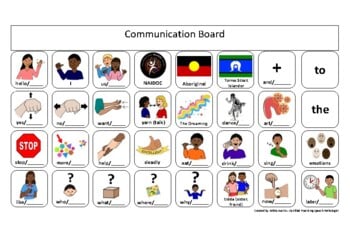
Social Media Accounts We Love Following
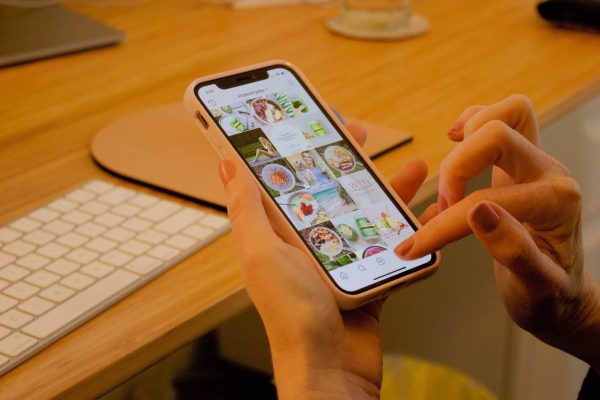
Here are some of our favourites:
@blakbusiness
- About: “Bringing together information, knowledge and resources to facilitate broader learning and discussion about Aboriginal and Torres Strait Islander topics”.
- Website: www.blakbusiness.com.au
@theorganisedslp
- About: “The OrganisedSLP is run by Nakita Austin, a Wanaruah woman, who shares tips, tricks and resources to help Speech Pathologists, teachers, and other allied health professionals organise their resources, admin, etc.”
@commongroundaustralia
- About: “Common Ground is a First Nations-led not-for-profit. We’re working to shape a society that centres First Nations people by amplifying knowledge, cultures and stories.”
- Website: www.commonground.org.au
@tradingblak
- About: “Trading Blak is a space for Aboriginal businesses to stand firm as leaders in a space rightfully ours. We invite allies to walk with us”
- Website: www.tradingblak.com
@yarnmarketplace
- About: “Showcasing First Nations art, culture and stories. Supporting First Nations artists, at centres, and small businesses.“
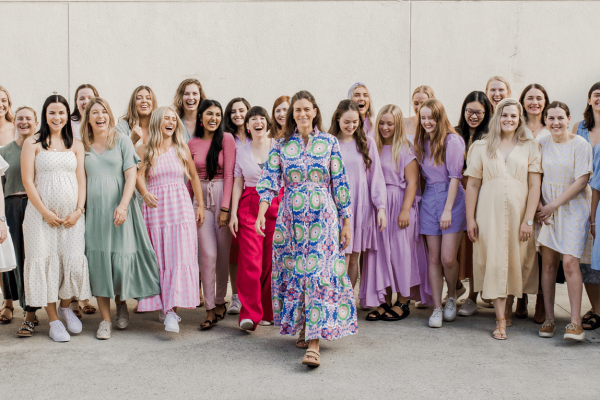
Our Final Thoughts: Indigenous-Made Speech Therapy Resources
There are of course many, MANY more Indigenous speech pathology resources available and we’ve only listed a small portion here!For a more detailed list of resources, you can purchase ‘Ours to Share’ created by @theorganisedslp who is a Wanaruah/Wonnarua woman and Speech Pathologist.
She also provides a number of discount codes for her products within this resource!
Are you a Speechie looking for an inclusive workplace? We’re always looking for passionate team members to join our Spot Family.
Learn more about working with us here.
